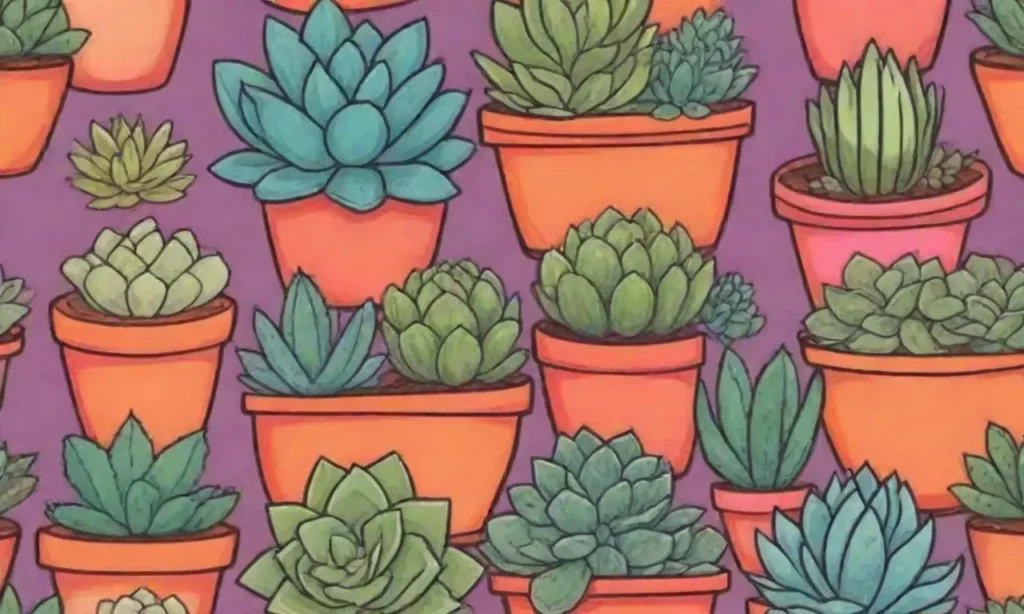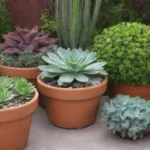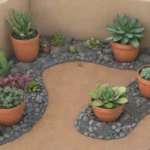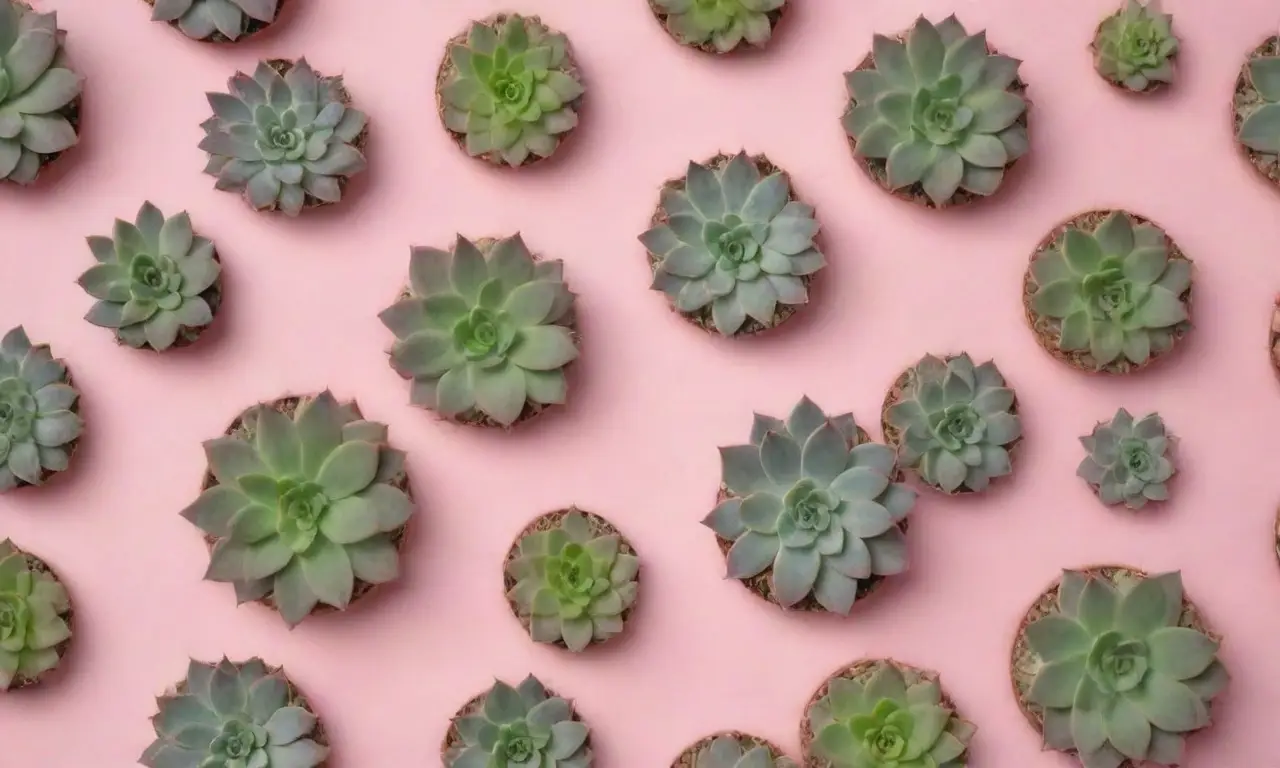From Borders to Focal Points: Using Succulents Effectively

Introduction
Plants are foundational elements in landscape design, providing not only aesthetic appeal but also enhancing the ecological balance of our environments. Among the diverse range of plants available, succulents have emerged as a popular choice for many gardeners and landscapers alike. Their unique visual characteristics, low maintenance requirements, and ability to thrive in various conditions make them excellent candidates for both small urban gardens and expansive, colorful landscapes. This article will systematically explore the effective use of succulents, transitioning from traditional borders to stunning focal points that can transform ordinary spaces into extraordinary ones.
In the following sections, we will delve into the many aspects of using succulents in design—how they can serve as functional borders, their potential to act as striking focal points, and tips on selecting the right species according to the specific conditions of your garden. Additionally, we will highlight both design principles and practicalities associated with caring for these resilient plants, ensuring both new and seasoned gardeners can maximize their aesthetic potential.
The Transformation of Borders: Finding the Right Place for Succulents
Understanding Traditional Borders in Landscape Design
Borders have long played a crucial role in landscape design. Traditionally, they serve as delineators between different areas or as softening edges to guide the eye throughout a garden space. Commonly filled with colorful flowers or foliage, borders often require consistent maintenance and a lot of resources in terms of watering and fertilizing. However, the introduction of succulents into these border spaces offers a new approach that can revolutionize how we think about landscape design.
One of the key advantages of using succulents in borders is their versatility. With a vast selection of textures, shapes, and colors, succulents can create stunning visual displays that elongate and define garden paths, patios, and gathering areas. For instance, a low-growing sedum can serve well in a pathway border, its lush green mat contrasting beautifully with stark pathways or hardscape features. Additionally, pairing succulents with complementary plants can enrich the textural contrast and further engage visitors, drawing them into the heart of the garden.
Designing a Succulent Border: Important Considerations
When transforming a traditional border into a succulent haven, several factors must be taken into account. First and foremost, understanding your growing conditions is imperative. Succulents thrive in well-draining soils and require plenty of sunlight. Therefore, one must choose a location that offers these essential elements. Incorporating drifts of various succulents with different heights can add depth and dimension, allowing the border to serve not just as a boundary but as an immersive experience.
Another key consideration involves mixing different succulent species for a diverse texture and color palette. Consider Echeveria, which displays rosettes in vibrant shades, alongside the sprawling tendencies of Sedum to create dynamic contrasts. For added intrigue, consider incorporating seasonal flowering species that strategically bloom at varying times to ensure year-round interest. When designing, be mindful of the scale and proportion. A well-planned succulent border can crescendo with large central plants like Agave or Aloe that draw the eye upward while kneeling accents of smaller varieties remain at the base.
Practicalities of Succulent Borders
In addition to design aspects, maintaining a succulent border requires understanding their unique care needs. Unlike traditional flowering annuals, succulents generally require less water, which aligns well with modern gardening trends focused on sustainability. However, this does not absolve you from responsibility; achieving that perfect balance of watering without leading to rot is paramount.
 Creative Succulent Displays for Front Yards That Dazzle
Creative Succulent Displays for Front Yards That DazzleTo create a well-drained environment for your border, consider elevating your succulents by planting them on mounds or raised beds. This adjustment will assist in preventing water accumulation that can cause root rot. Furthermore, frequent trimming and dividing will help maintain an appealing shape and prevent overcrowding over time. Mulching with gravel or decorative stones not only assists with drainage but adds another appealing layer to the visual feast that is a succulent border.
Succulents as Focal Points: Making a Bold Statement
The Allure of Focal Points in Landscaping
Focal points can be defined as the areas within a landscape design that draw the viewer’s attention. These points are pivotal in directing the flow of movement and visual exploration throughout a garden. By using succulents as captivating focal points, you can create striking displays that invite curiosity and inspire admiration. This technique helps to anchor other elements in your design, allowing visitors to navigate your garden with intention and delight.
In essence, succulents can elevate the concept of a focal point beyond mere visual pleasure. By choosing larger, more sculptural varieties, such as a robust Agave americana, you create a dynamic centerpiece that not only commands attention but can also be a conversation starter among guests. Utilizing succulents as focal points also leads to a sustainable approach, as they require comparatively low maintenance while showcasing character and beauty throughout varied seasons.
Selecting and Arranging Succulent Focal Points
Choosing the right succulent variety for a focal point involves combining aesthetics with practicality. Opt for larger succulents with distinct forms, colors, or textures to ensure they are truly eye-catching. Consider increased height or dramatic leaf shapes; using Aloe vera with its upright growth pattern can bring both a textural contrast and a vertical element to your design space.
Placement plays a significant role in executing a successful focal point. Position your succulent arrangement in areas that can be viewed from multiple angles; surroundings such as patios, entryways, or garden gates are perfect for capturing attention from all directions. To create visual impact, arrange them in groups of odd numbers; this is a principle in design that evokes a more natural and less rigid look. Building height variations by incorporating taller species among short specimens allows for multilevel excitement, ensuring that every eye-glance brings a new discovery.
Creating a Stunning Succulent Arrangement
To achieve a complete and appealing focal point, consider combining your selected succulents with complementary design elements. Pairing with decorative pots or containers can add character and dimension to your arrangements. Terracotta and ceramics work wonderfully with succulents while also offering physical texture with a classic look. Additionally, utilize creative layers with different materials like stone, wood, or even wrought iron to highlight the natural beauty of the succulents while maintaining harmony in design.
Color is another paramount element to consider when constructing a succulent display. Opt for contrasting hues to create excitement while adhering to color theory principles for balanced compositions, such as pairing cooler shades like blue echeverias with warmer hues like red yuccas. Include seasonal flowers or grasses in the background to enhance the display while offering a continuous sense of freshness throughout the year.
 How to Use Succulents to Enhance Entryways and Pathways
How to Use Succulents to Enhance Entryways and PathwaysConclusion

In summary, succulents are not merely plants; they represent an innovative approach to landscape design that offers both beauty and resilience. By transitioning from traditional borders to dynamic focal points, gardeners can utilize these diverse plants to create spaces that evoke wonder and connection. Understanding the principles of design, environmental conditions, and ongoing maintenance can further empower homeowners and designers to enhance their garden landscapes.
The world of succulents is boundless and inviting, allowing for creative expression in both urban gardens and sprawling estates. Their unique qualities serve not only to beautify spaces but also to encourage sustainable gardening practices, making them perfect choices for the responsible gardener. Whether it’s starting with a small border of colorful sedums or investing in a dazzling agave focal point, embracing succulents can redefine your approach to landscaping. With their stunning resilience, distinctive aesthetics, and low-maintenance needs, succulents promise a fulfilling gardening experience that enhances the beauty of your landscape for many seasons to come.
By taking the time to explore the many ways that succulents can fit within your landscape design, and learning how to use them effectively, you can create stunning and inspirational spaces that you'll be proud to share with friends and family. Start today, and let succulents transform your outdoor spaces from ordinary to extraordinary!
If you want to read more articles similar to From Borders to Focal Points: Using Succulents Effectively, you can visit the Landscaping Ideas category.
